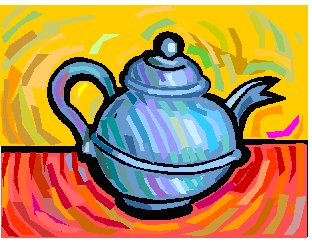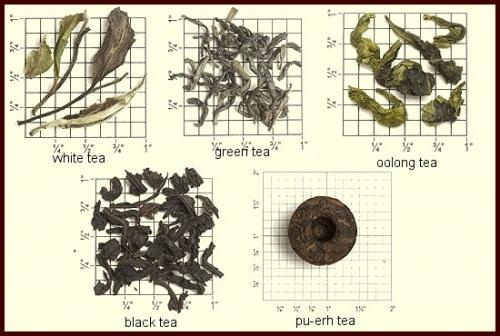A Primer on Tea, or How to Become a Tea Snob

Tea is experiencing a revival in the west, but it has been a popular beverage world-wide for thousands of years. Most of the tea we drink in the western hemisphere is black tea, but we are drinking more green tea since the revelations about its health benefits.
Most of the tea we drink, black or green, is blended to make sure that you can reach for your favorite brand and get the same flavor year after year. There's nothing wrong with that; we all have our quick favorites.
Still, there are other ways to enjoy tea. As with wine, you can enjoy individual varietals, blended for consistent quality from one year to the next. You can also branch out into vintages and flushes (picking seasons), such as a 2008 Darjeeling first, second or autumnal flush. And, with all the teas available these days, you don't have to depend on other people to blend your tea. Educate your palate and you'll be able to play around with your own blends.
There are many types of tea. The main groupings are based on the type of processing they go through. The five main types are White, Green, Oolong, Black and Pu-erh. White is the least processed and has the least caffeine; Pu-erh is the most processed and has the most caffeine. These are five very different types of tea, with very different nuances and flavor profiles.

Let's start with the basics of the five varieties. White teas come primarily from Ceylon, China and India. Young leaves are dried to remove all moisture but the natural flavor of the delicate picking is preserved. Light in body, a white tea yields a refined infusion that is naturally sweet.
Green teas primarily come from Kenya, China, Formosa, India, Indonesia, Japan, Ceylon and Vietnam. Green teas, the earliest form of tea, are processed without oxidation. An infusion of green tea leaves creates a light and refreshing drink. The flavors of green teas are primarily vegetal and grassy, with a slight bitterness that is more pronounced than in more processed teas.
Oolong teas come primarily from China, Formosa, India and Thailand. Oolong has a taste more like green tea than black tea, but Oolong is its own animal. It lacks both the flowery, sweet aroma of black tea and the strong grassy, vegetal notes associated with green tea. As a tradeoff, a noted characteristic of Oolong tea is a lingering sweet aftertaste. Oolong goes well with food, and is one of the teas commonly found in Chinese restaurants.
Black teas come from all over the world. Africa gives us teas from Kenya and Malawi, Asia has Ceylon, China, Formosa, India, Indonesia, Nepal, Vietnam, and the Caucasus regions of Turkey and Russia span the bridge between Asia and Europe. The flavor of black teas depends upon the country of origin, the geographic area and estate where it is grown, when it is picked, and the grade of the leaves. Black tea is generally stronger and more complex in flavor than the less processed teas.
Pu-Erh teas go through a double fermentation during which the tea leaves actually begin to decompose. They have a strong, earthy flavor and aroma. They can be an acquired taste, but they are typically flowery and sweet, with an underlying earthiness. Pu-erh teas are available in leaf form, but customarily come as pressed cakes or bricks. The kilo-sized bricks used to be coated with shellac and sold as souvenirs! (They made great doorstops and bookends.)
Sounds simple, eh? Au contraire! There are many varieties of each, and also crossovers between groups. There are White Pu-Erhs, Darjeelings and Assams. There also white and green Darjeelings and Assams. There are also flavored varieties amongst all of these, like White, Green and Black Jasmines. And the classic Earl Grey is created by the addition of oil of bergamot (a variety of citrus) to (usually) black tea.
There are vast differences in the same type of tea from different places. Terroir matters with wine, and with tea. A Chinese Lapsang Souchong or Jasmine is very different from the Formosan variety. And a Darjeeling from one estate has a very different flavor profile from another estate a few miles down the road. There are even differences on the same estate, depending upon the altitude and soil where the tea is grown. The world of tea really is a world unto itself, the same as wine.
Let's take a minute here for some tea terms. Lapsang Souchong is named for both the process and the leaf size customarily used in its production. Souchong refers to a tea made from the larger older leaves of the shoot. Pekoe and Orange Pekoe are also leaf sizes, with Pekoe a slightly larger leaf than Orange Pekoe.
There are also quality grades to contend with. Most of those are based on the appearance of the leaf itself, which sort of matters and sort of doesn't. It does indicate the care that was taken in the processing of the tea. Quality tea production is very labor intensive, so most of the tea we see is CTC (cut, tear, curl). CTC is machine processed tea. The bulk of the tea market consists of CTC, because it is cheaper to produce, and quicker to brew. It produces broken leaves, fannings and dust, all of which are cheaper grades and more convenient for tea bags and cheap blended teas.
On the other hand, you can buy a Sungma Estate SFTGFOP1 First Flush. Huh? It's easy. Sungma is an estate in the Darjeeling district, and the letters mean that this tea is from the first picking of the year, and it is Super Fine Tippy Golden Flowery Orange Pekoe - grade 1. Are you impressed now? You'll probably be more impressed when you taste the tea. By the way, if you see the word "clonal," it's just another way of saying that one variety was grafted onto another root stock, much the same as with grape vines or fruit trees.
Where and how do you start? Many reputable tea merchants offer sample sizes of most of their teas. You can buy 10-12 gram packets that will make three to four cups, enough to sample and take notes. That note-taking process will prove invaluable. Once you've bought 10 different Darjeelings you're not going to remember which one had that lingering sweetness, or which one had the great nuttiness. And trust me, once you've tried three samples of something special, you'll want to try ten. Just remember, there are broken leaf grades of Darjeeling that may not be as pretty but will produce just as impressive a cup. The key is to keep trying. The same goes for every variety of tea. Just keep buying those samples, and find out what you like. Your tea diary will become your best friend.
Now we've come to the point where tea and wine differ. Many people collect wines of different vintages and vineyards. But they drink them. Nobody would consider mixing them; they've bought the specific wines for their individual characteristics. The wine producers do some mixing, and that's how non-vintage wines are produced. But they don't use their best wines for blending.
And neither do commercial tea blenders. But that's just what tea connoisseurs can do. You can develop your own blends. Look at your notes and see what you liked and didn't like. Pick a foundation flavor and move on from there. You might like the overall character of a sweet but fairly neutral Ceylon to start with. On the other hand, you may be looking to create a bracing breakfast brew, with a good, malty Assam as a foundation.
Now, decide what flavors you want to boost. Perhaps that Ceylon would be complemented by the depth and flowery, fruity notes of a second flush Darjeeling, for a refreshing afternoon blend. That same Ceylon might make a great addition to the Assam, adding its own subtle sweetness to a great early morning pick up. Either one might be complemented by a flowery touch of Jasmine or the smoky and mysterious edge of a bit of Lapsang. It's that magic Lapsang that gives the customary character to most Russian blends. Ceylon is frequently the base for English breakfast, and Irish Breakfast can be entirely Assam or a blend of Assam with other yummies. Perhaps you'd like to find a good Earl Grey and see what you can do to enhance it. Anything is possible.
It just depends on your taste. Enjoy the health benefits of your tea. It's nice that something so delicious can also be good for you. But don't overlook it as a hobby or an object for obsession, for it can become either. You can take a secret pride in being able to taste a tea and know that it has a good percentage of Darjeeling, or Keemun. And you can become one of those crazies who insist on boiling fresh water for your custom blended tea that accompanies you wherever you go. There are worse fates.




